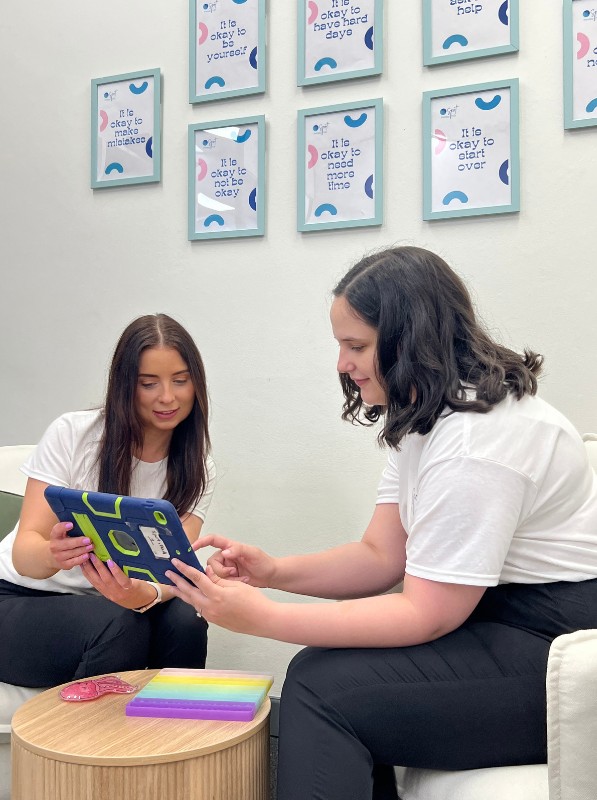


AAC, which stands for Augmentative and Alternative Communication, represents a diverse array of tools designed to support individuals in their communication journey when spoken words alone may not suffice.
Augmentative communication is about enhancing spoken communication. For instance, it includes using key word signing, pictures, alphabet charts, and gestures alongside speech, making communication more accessible and comprehensive.
Alternative communication, on the other hand, comes into play when spoken words cannot be utilized effectively. Individuals who may be non-verbal or have limited verbal abilities can benefit greatly from alternative communication methods that help convey their thoughts and needs.


It’s essential to understand that augmentative communication isn’t exclusive to those with communication impairments. In fact, many of us resort to some form of augmentative communication at various points in our lives. For example, pointing at a picture on a foreign menu when you don’t speak the language or gesturing for a drink in a noisy environment because the person you’re speaking to can’t hear you are all instances of augmentative communication.
However, for many children and adults with communication impairments, the challenge of not being able to express themselves effectively through speech is a daily reality. AAC serves as a vital tool that enables these individuals to communicate with the world.
A diverse range of individuals can benefit from AAC to enhance their communication skills.
Families often become experts in interpreting their child’s unique attempts at communication. They can intuitively understand their child’s needs with just a glance or a gesture. While this fosters a nurturing environment, it’s crucial for children to develop independence in their communication skills. AAC empowers individuals to express themselves and connect with people beyond their immediate family circle, nurturing meaningful friendships and relationships—an essential goal for every child as they embark on their educational journey.
Communication is a fundamental human right, and AAC plays a pivotal role in enabling individuals with communication impairments to exercise this right.
AAC empowers individuals to make choices, express desires, voice preferences, and engage in conversations. It equips them to interact with their surroundings, ask and answer questions, and actively participate in life.
For many, AAC serves as the key that unlocks a world of possibilities and opportunities they might not otherwise access. It provides them with a voice, and every voice deserves to be heard.
Discover more insightful blogs on this topic at spottherapyhub.com.au, or reach out to us at spottherapyhub@gmail.com. Don’t forget to tune in to our podcast, ‘The Spot Therapy Hub Podcast,’ available on Apple Podcasts and Spotify, for further exploration of this critical subject.